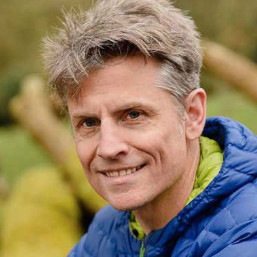From the 80-metre cliffs of the Mull of Galloway with their spectacular gannet colonies to the vast and beautiful Luce Sands, The Merrick – the highest point in southern Scotland – and the artists’ town of Kirkcudbright, Galloway appears to have it all.
The perfect location to create Scotland’s third national park after the Cairngorms and Loch Lomond and the Trossachs, therefore? Not necessarily.
With the announcement that Galloway is now the Scottish Government’s preferred and only option to be given national park status, a process has begun that could see it become the UK’s 16th area with that very special designation.

While the Galloway National Park Association (GNPA), which started the process seven years ago, is clearly hopeful this will come to fruition, some farmers and their lobby group, the NFU Scotland, have come out against the idea.
“This hasn’t come from the community, it comes from a small minority that live here,” says dairy farmer Colin Ferguson, who has a landholding near Wigtown in the south of Galloway.
Ferguson says he and other farmers worry that because the Scottish Government has said there will be a new national park by 2026, and Galloway is now the only option being considered, its designation is almost a fait accompli.
With its high productivity dairy farms and fertile machair coastal habitat, Ferguson argues that Galloway is unlike any other area with national park status in the country – upland areas with extensive sheep farming are more the norm, he says. He is also concerned that it could be a way to help the Scottish Government achieve goals set under the 30x30 target – 30 per cent of land (and sea) area protected for nature by 2030.
But Rob Lucas, chair of the GNPA, says they have held more than 100 meetings with community councils, other groups and schools, as well as public meetings. Concerns that national park status will prove a problem for farmers or that it will turn Galloway into a location over-run with tourists, such as the Lake District, are both misplaced.
“Most agriculture is outside the scope of planning,” Lucas explains.
On the issue of visitor numbers, Lucas says that Galloway currently gets about 800,000 visitors a year, which amounts to about 300 per km2. That could go up, with national park status to between 400-440 a year – the Lake District, in contrast, gets around 7,000 visitors per km2 a year.
Being a national park would put places such as the Mull of Galloway, The Merrick and Kirkcudbright on the map, and lead to more people (but still a sustainable number) enjoying these natural treasures. A public consultation will begin in the autumn, and a decision is expected in 2026.
More stories about the environment
- Remarkable before-and-after photos capture the scale of Scotland's ecological recovery
- White-tailed eagle chicks born in England for only second time in 240 years
- Precious lost rainforest to return to Wales with "exciting" new restoration project
- Sycamore Gap tree: 'Astonishing' new shoots emerge from stump
